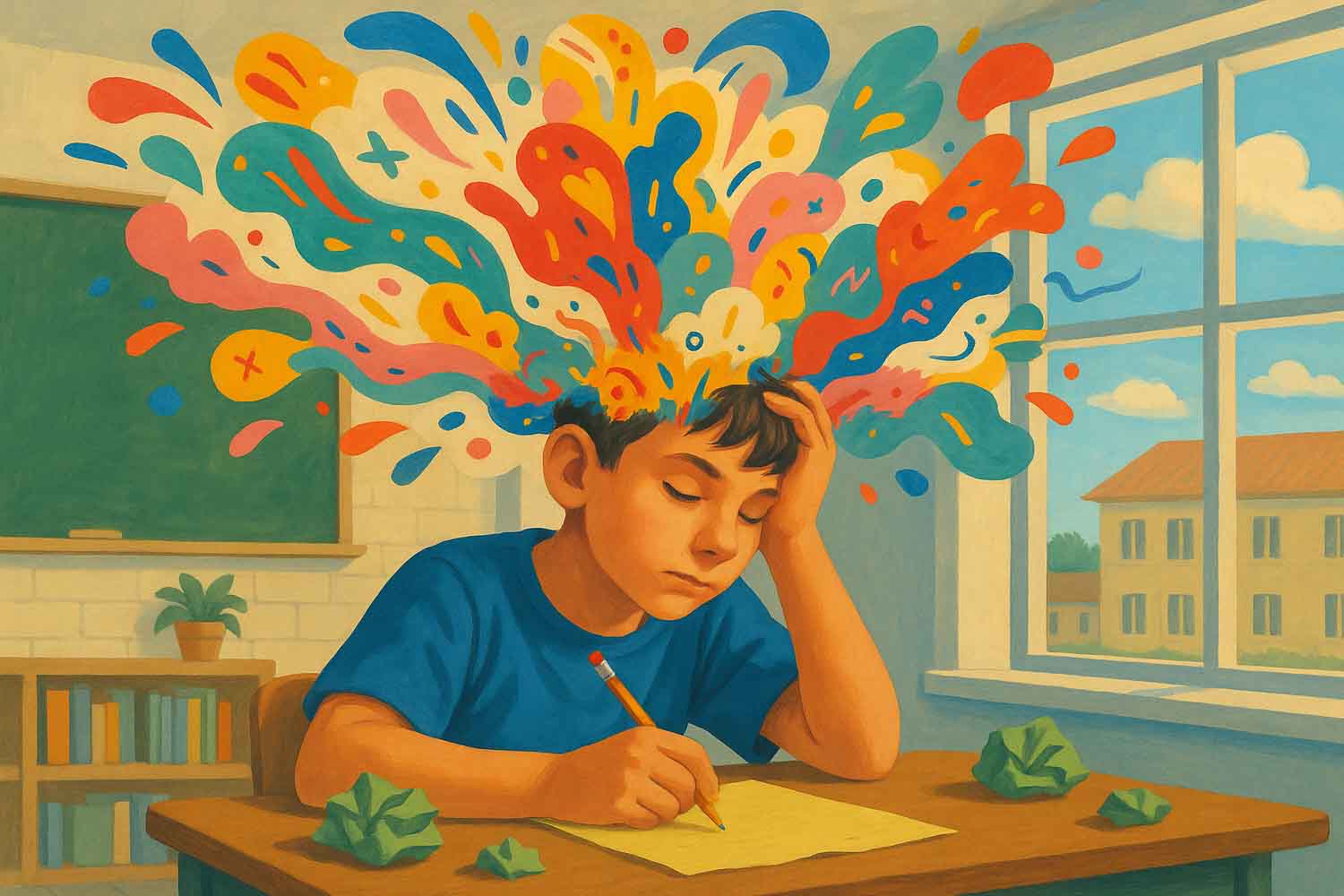Those with ADHD aren't just distracted: they could be much more creative, thanks to the way they let their minds wander through a conscious form of divergent thinking, often underestimated

Table of contents
When we talk about ADHD, we immediately think of inattention, restlessness, difficulty concentrating. But here’s the surprise: these very traits could make you more creative, if the mind is allowed to wander consciously.
A team of researchers from Radboud University Medical Centre presented a study at the ECNP Congress in Amsterdam that links ADHD to a specific type of divergent thinking. At the core of everything is a little-known but very interesting concept: “deliberate mind wandering”, or letting the mind wander voluntarily.
According to the research led by Dr. Han Fang, this seemingly disorderly way of thinking can actually stimulate originality and creativity, especially in those with ADHD-related traits like impulsivity and inattention.
Two studies, 750 people involved
To better understand the link between ADHD and creativity, researchers analyzed data from 750 adults in two separate studies conducted across Europe and the United Kingdom. Some participants had an ADHD diagnosis, others did not. All were given tests to measure typical ADHD traits, creativity levels, and the tendency toward mental wandering.
The questions were simple but targeted: how often does your mind get distracted without meaning to? Or: do you intentionally let it wander, perhaps to stimulate new ideas?
Creativity, instead, was measured in two ways:
- with the Creative Achievement Questionnaire, which evaluates concrete results in artistic, musical, or scientific fields;
- and with the Alternative Uses Test, where participants are asked to find new uses for common objects (e.g., a paperclip that becomes a pendant or a mini sculpture).
The result? People with greater inattention and impulsivity achieved higher creativity scores, and the real breakthrough came through deliberate mind wandering: those who practice it with intention seem to have an extra edge.
What happens when the mind wanders… but does so with purpose
Not all mental distraction is equal. Researchers distinguish between:
- spontaneous mind wandering: when the mind gets distracted on its own, without control;
- deliberate mind wandering: when you consciously choose to disconnect, to make room for new ideas.
The second type proved to be very useful for creativity, while the first is more often linked to practical difficulties, like concentration problems or disorganization. In short: the same mind that distracts can also create, if guided well, as Dr. Fang explains:
Our discovery opens new possibilities for education and therapies. Teaching people with ADHD to transform distraction into a creative tool could be key to reducing difficulties and enhancing their potential.
Neuroscientist Klaus-Peter Lesch from the University of Würzburg, not involved in the study, also emphasized how valuable this ability is: “Mind wandering is a resource that fuels creativity in high-functioning ADHD profiles. Such people are a real asset for the future of society.”
When thinking never stops: from distraction to discovery
Those who live or work with people with ADHD know it well: the mind never stays still, it jumps from one thought to another, collecting stimuli from everywhere. It’s not always easy, especially at school or at work. But sometimes, it’s precisely in this continuous flow that brilliant ideas are born.
This is demonstrated by the story told by a mother on Psychology Today: her son, with ADHD, described his mind as a bin too full from which everything overflows. Yet he became a finalist in a NASA competition thanks to a project inspired by origami to build a Martian lander.
And the same goes for many entrepreneurs and innovators: David Neeleman (JetBlue) said his “out of the box” mind is thanks to ADHD. Richard Branson (Virgin) has always defined ADHD and dyslexia as strengths, not defects.
The message of this study is clear: it’s not about eliminating wandering thoughts, but about learning to guide them. Strategies like mindfulness or certain therapeutic techniques can help people with ADHD use their creativity more consciously, without giving up their nature.
Source: ECNP
